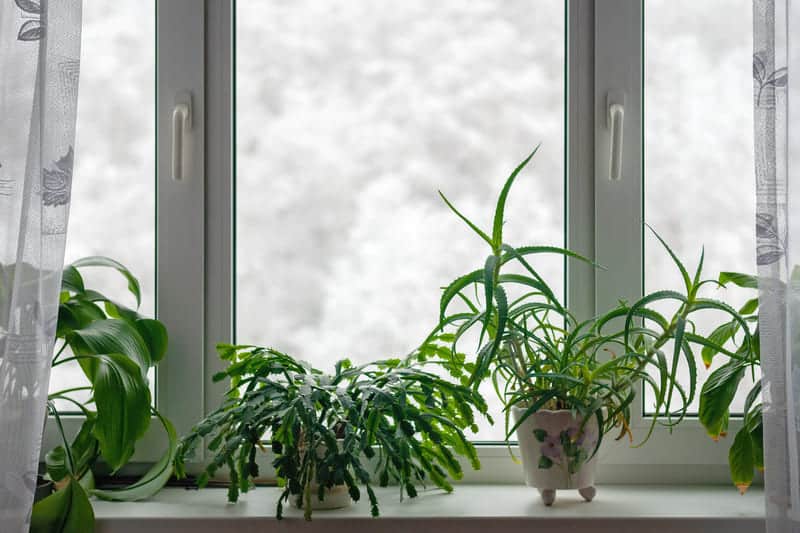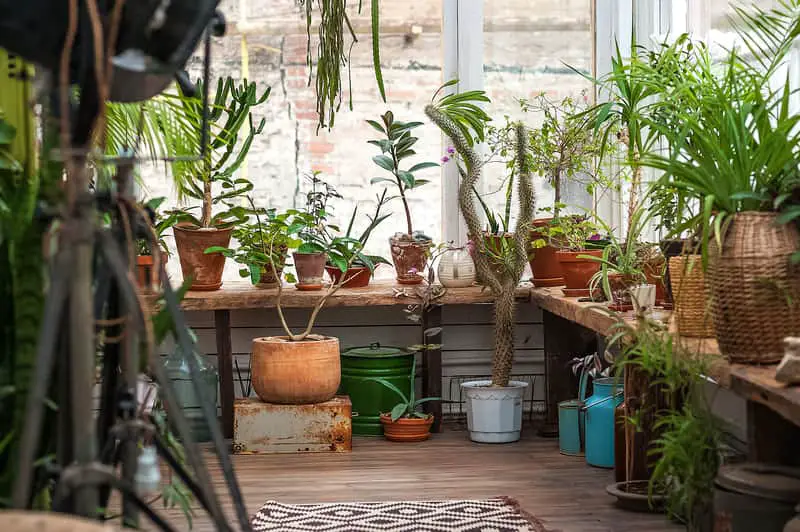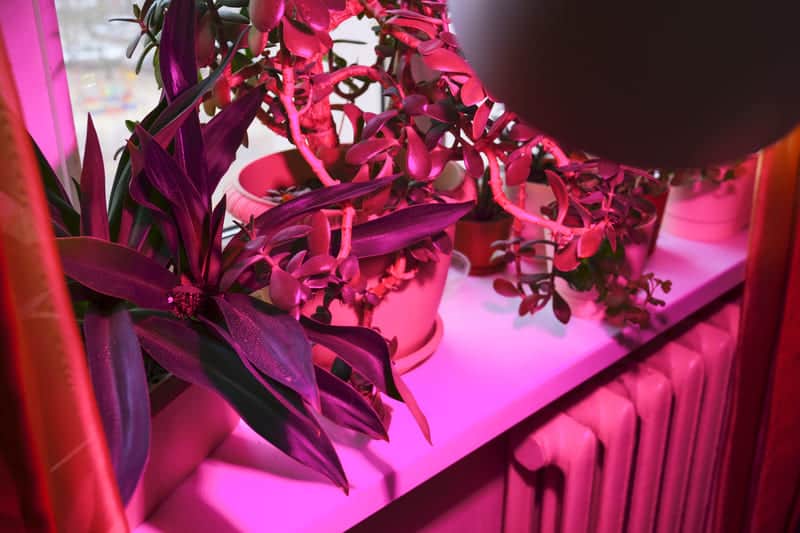Plants respond to Mother Nature’s cues when autumn comes, dropping their leaves and dying off but as winter changes to spring, so does the temperature. Here are some tips to help your plants make the transition easily.
One of the simplest ways to keep your plants warm and happy is to ensure they are not placed in drafts or on a window sill which loses a lot of heat at night when your heating is switched off.
You can also use insulation materials, greenhouses, heating mats and other simple ideas such as recycling household materials to re-use and save you cash, while your plants thrive.
To keep plants warm in winter, insulate them from cold drafts, cover with frost blankets or mulch, and provide extra heat if necessary. Relocating plants indoors or to a greenhouse can also help maintain warmth.
Keep reading to discover how you can use insulate your plants, as well as information about the products you can buy to help your plants stay cosy.
How do you keep plants warm in winter?
Avoid window sills unless your insulation is absolutely perfect because they can become really draughty when the heating goes off.
When the temperature drops, people cuddle up to fires or snuggle under duvets so think of a sheltered spot for your plants, like putting indoor pots on top of a fridge, freezer or even a fish aquarium.
If you have a cat, watch where they choose to sleep or snooze; invariably this is the warmest spot in the house! For easy movement, put all your pots into a big container which you can position close to a heat source as required.
8 Ways to Keep Your Plants Warm
1. Fridge
Have you noticed how the top of your fridge always feels warm? The effort it uses to keep food cool provides you with the perfect place to place your pot plant overnight, during cold weather. When the summer arrives, you can just move it back to its usual location.
2. Aluminium foil
Can you think of a second use for aluminium foil? We use it in cooking to conserve heat and as it is a reflective material, if you wrap it around or underneath plant pots, the sun will warm them when it shines and keep that whole area warmer for longer.
3. Bubble wrap
When your next parcel arrives, do not discard it. Instead, strip out the bubble wrap packaging and save it to mollycoddle your plants.
It protects both indoor and outdoor plants so either wrap it well around the pot or secure it with loosely tied string around the actual plant stem outdoors. It acts as a cushion of protection from drafts, low temperatures and even snow.
4. Glass greenhouses
Glass greenhouses are built for this! If you are lucky enough to have space in your garden for one, this will keep many plants frost-free.
You can aid this process by ensuring a good fit on the door, and even bubble wrapping the inside during colder months, so that the weather stays outside.
This method will also allow you to harvest winter salads, propagate plants sooner and give some protection to all plants within its walls.
5. DIY greenhouses
Plastic or DIY greenhouses. Even if a glass greenhouse is out of your budget, you can buy cheaper, plastic versions. Another idea is to make a DIY frame with an old window, placed over a cardboard box outside.
If you ensure this is located next to a house wall, then it will gain heat because the residents need to keep snug! These are both excellent methods to keep plants covered up at night time when you are starting to harden seedlings off in spring.
6. Heated mats
Heated mats can be bought for plant propagators and in especially cold weather, place several pots on one of these to keep the cold at bay!
You can buy covers for propagators too, and utilising several heat mats will allow you to keep a range of seedlings at a comfortable temperature.
7. Heat lamps
Heat lamps are extremely effective at keeping air temperature constant. However, they can work out to be quite expensive if you leave them running non-stop. If it’s snowing, they will certainly provide some temporary relief for a delicate plant and you can combine physical insulation with a heat mat to be doubly sure.
8. Stones
What about stones? During a sunny day, if you touch a stone you will notice how hot it feels, particularly dark stones, which absorb lots of heat.
The great thing about them is that they continue to release this heat after sundown so use them strategically placed so that your plant will see the benefits.
How to keep plants warm in spring
In winter, most plants hibernate or at least, slow down their growing process because the levels of light are too low. So as spring air temperature increases, finding a suitable warm area in your house close to a radiator is a good option for plants, particularly when you are trying to get seeds to germinate.
It is a good spot to return plants to, when they can go outdoors in day time but need a warm spot to rest at night.
The danger for plants is if they are placed in a frost situation. Tomato plants will never recover from this so ensure you harden plants off gradually, by putting them outdoors for a short period each day for a week.
Take them back indoors at night time and when there is no risk frost, they can be dug into permanent positions.
Cloches can also be placed over the top of plants to protect when frost is predicted.
You can make your own by recycling milk or liquid plastic containers, cutting them to fit over the plant and hey presto! A mini greenhouse effect will be created, which you can remove next morning.
How to keep outdoor, potted plants warm in winter
First of all, place your pots in a sheltered area, if you can. Sometimes if the weather forecast is particularly harsh, it can be beneficial to place a layer of transparent plastic over them, secured with pegs. Covering their growing tips provides them with a little protection, as well as insulation.
Some gardeners mulch their favourites with well-rotted leaf mould, covering any vulnerable tips. Dahlia bulbs enjoy this kind of treatment and will reward you with colourful blooms the following year.
Watering outdoor plants less in winter is also beneficial because the plant will believe it is still in winter and will likely remain in hibernation mode until the temperature heats up.
What temperature is too cold for plants?
When freezing temperatures affect plants, their leaves often wilt or turn black.
This is frost damage and temperatures below 32 degrees Fahrenheit will usually cause damage to plants, if they are exposed for longer than a couple of hours.
Obviously, some plants cope better than others if they are accustomed to colder temperatures but for plants of tropical or semi-tropical origins, this would be a death knell.
New seedlings, some herbs and tomatoes will not survive so it is best to ensure that vulnerable plants like these are kept indoors until the danger of frost has passed.
Strangely enough, plants like cacti and succulents, which are adapted to high daytime desert temperatures often have to ability to survive in really cold, nocturnal weather as well.
A warm temperature is essential for the germination of seeds and your plants, whether indoors or outdoors varieties, will respond well to being kept warm.



